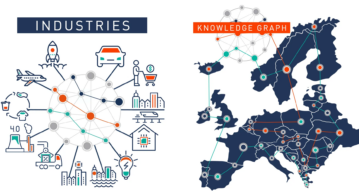How digital omnichannel made change happen for the insurance sector
There have been very few positives that have come out of the recent epidemic that’s swept the world. But one glimmer of light has been the acceleration of digitisation in organisations, a boost caused by staff having to work from home.
The companies some way down their digitisation “paths” will have reacted better than most, but in almost every case, the reasons why companies should be pushing ahead with technology plans have at least been made very apparent.
Having staff work from home has had positive effects on the business in many cases, but the degree of success depends on using the right technologies, and, as this blog post indicates, some reassessment of management approach.
An immediate indicator of using technology effectively in business has been the digitally-agile ability to maintain the quality of customer experiences over the last year. Customer communication and interactions across channels are the mainstays of customer experience quality, and in the financial and insurance sectors that is a significant differentiator between companies.
The success stories in these highly-competitive verticals have managed to pull off something of a coup, despite the workforce’s imposed challenges of suddenly being marooned at home. With the right platforms in place, some organisations managed a swan-like serenity: unruffled on the surface, yet with technology working hard underneath and out of sight to keep a constant forward motion.
Dig a little deeper into the details, and what comes to light is how omnichannel communications platforms allowed companies large and small to keep providing high-quality customer experiences, and, as circumstances dictated, to go above and beyond “normal” levels of service. When personal & digital interactions became very much more important for customers under pressure at a time of crisis, it was “A-Grade” technology that empowered staff to go the extra mile.
The omnichannel communications platform deployed as a SaaS proved to many in the financial services & products sector just how adaptable and scalable technology could be. A key proponent of technology in this field, RingCentral, saw a spike in need for fast and easy routing of customer enquiries to specialist experts in companies. That came amid an overall rise in volumes of calls, emails and enquiries on messaging apps such as WhatsApp and Apple Business Chat.

Source: Shutterstock
The omnichannel communications specialist helps organisations large and small with their daily interactions with customers and end-users. One such adopter of RingCentral technology is leading insurance company, AXA.
Customers contacting the insurer via digital channels were found to use the same tone of voice that they would use when chatting to friends, in part due to the use of their favourite messaging apps. That created some superb feedback from customers and a resolution rate for AXA ten times better than before RingCentral was deployed.
Care agents were able to field multiple interactions simultaneously, and, as Christoph Schröder, Head of Front Office Customer Care said, “[It’s] easy for our agents because messages pop up in their dashboard. They can immediately answer questions but have time to provide answers if multiple messages come in at once.”
While routing an enquiry to the right person might seem like a trivial task, in a connected, digital-first world (the one in which just about every financial product user lives today) the underlying complexity needs to be addressed.
To achieve results like this, an omnichannel communications platform has to integrate with a company’s directory of contacts and get access to information about which product specialists are available, and via which channels. Technically, that equates to interfacing via APIs with directory protocols and scheduling information either from point products or existing ERP systems.
AXA’s agents have immediate access to each customer’s history, whether working at home or in the Contact Centre. Enquiries or interactions that start on digital messaging transfer seamlessly to the right staff member who’s capable of addressing the issue using their knowledge and experience — without the user having to identify themselves and restate their needs.
Therefore, what emerges is a fully-integrated technology platform that pulls together omnichannel communications and system integrations. The customer’s outcome is a quality of customer experience that is not snagged by friction-points, like repeating personal information to consecutive operators, or retyping queries in a web form and then a mobile app.
The insurance company or financial services provider benefits operationally, as the integrated systems can help schedule care agents’ shifts to cover specialist areas at the right times of the day. That makes process management right across even the most extensive financial enterprises simpler, faster, and with customer satisfaction metrics bouncing along the top of the scale. Crucial insights come from real-time and historical reporting facilities, aided where necessary by AI algorithms capable of detecting trends that might otherwise go unnoticed.
For technologists, the challenge is to balance data integrity & protection with the ability to communicate and interact with consumers in ways and with tone-of-voice that people expect today: in messaging apps, over the phone, on social media. For customer support managers and supervisors, the challenges and benefits relate to employee engagement and ongoing improvement, employee scheduling, and the problems associated with the workforce’s distributed nature.
And for the customer, what digital solutions providing omnichannel capability mean is a positive and enjoyable experience every time there is contact with their insurance company, broker, mortgage company or bank. Should they choose to use email, voice, Facebook Messenger or bespoke app from the company in question, how the interaction takes place and with what level of convenience and satisfaction are the deciding factors: it’s what they remember.
To learn more about providing seamless and positive customer experiences at every touchpoint, you can schedule a full demo of RingCentral Engage Digital. Benefits to the business are fantastic, but the real winners are the customers in a marketplace where the quality of customer experience is a significant differentiator.









